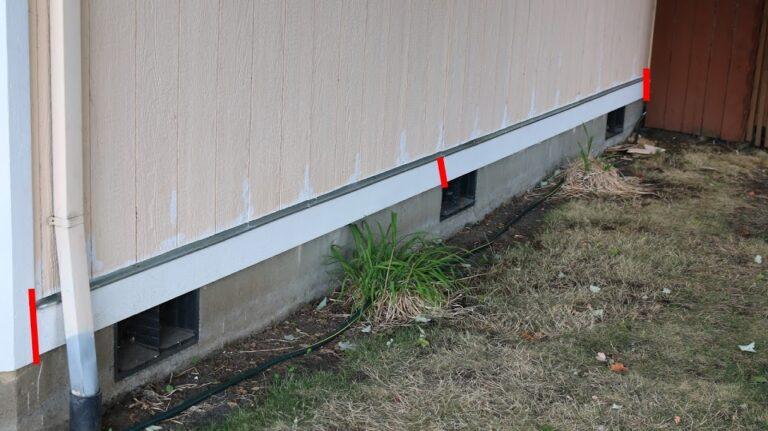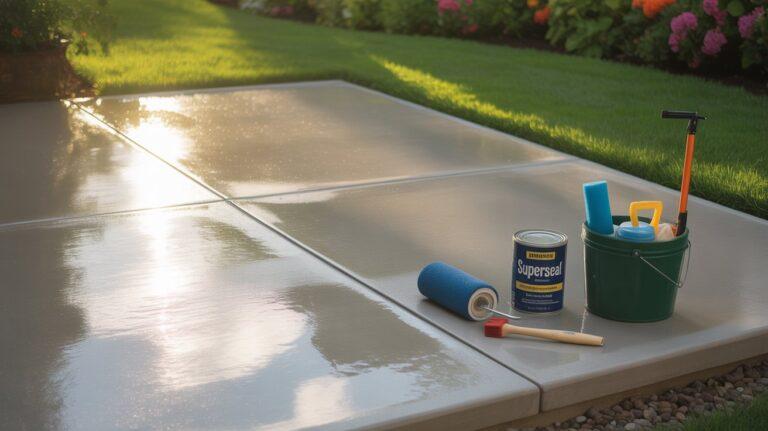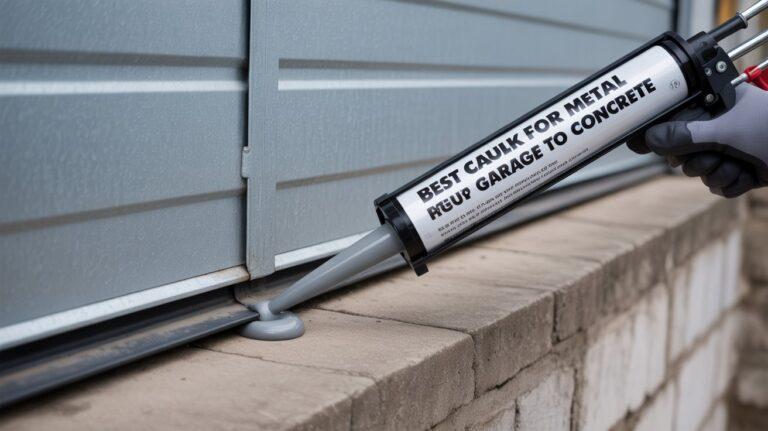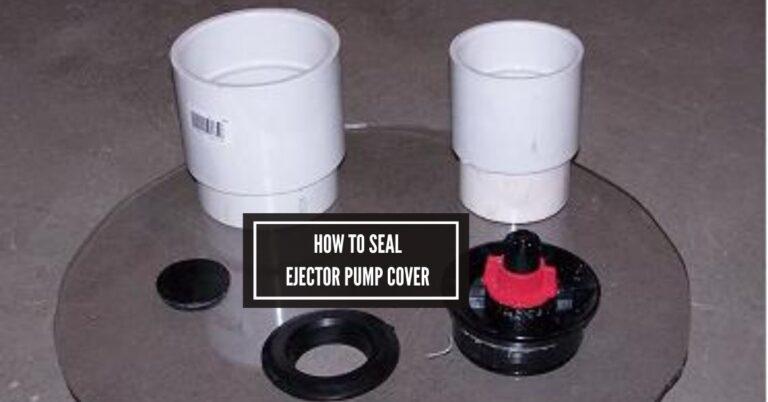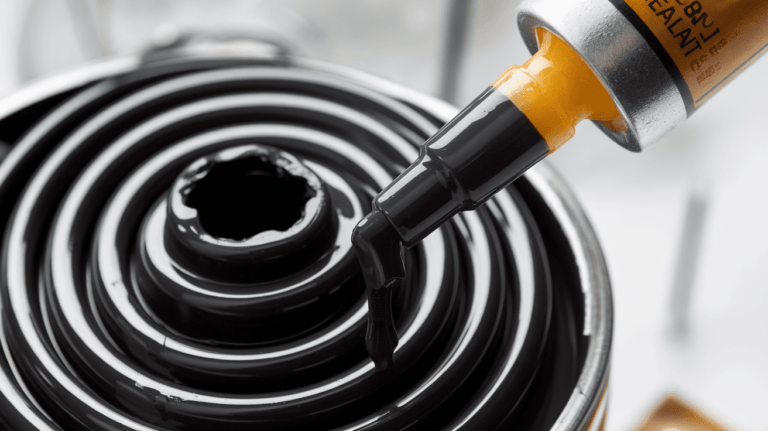What to Use to Seal Cracks Outside House: Top Solutions!
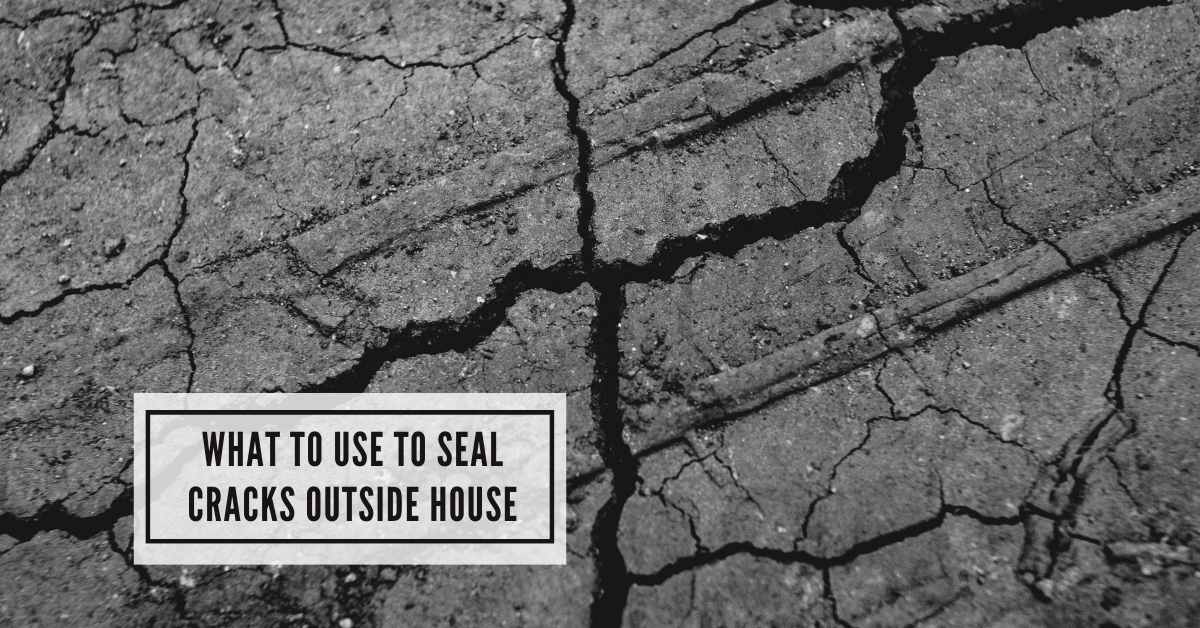
To seal outdoor cracks, use a flexible silicone caulk or waterproof sealant. Select products designed for exterior use to ensure durability.
Ensuring the long-term integrity of your house’s exterior is vital for home maintenance, particularly when it comes to sealing cracks that can let in moisture, pests, or drafts. With seasons changing and weather conditions fluctuating, your home’s exterior surfaces expand and contract, which can lead to cracks and gaps.
Locating these cracks and properly sealing them with the correct materials not only protects your home from external elements but also increases energy efficiency and reduces the risk of structural damage. Choosing the right sealant, which can withstand the outdoor environment, is crucial in keeping those unwanted elements outside where they belong. Opting for a high-quality, flexible sealant suitable for the variable temperatures and weather conditions your home faces will ensure these repairs are both effective and lasting.
The Importance Of Sealing Exterior Cracks
Keeping your house in top shape is essential. One key task is sealing cracks outside. Not only for aesthetics but for protection. Cracks can lead to serious issues like water damage and pests. Proper sealing can save money on repairs and boost your home’s value.
Understanding The Impact Of Unsealed Cracks
Unsealed cracks are more than just an eyesore. They let in moisture, which can cause mold and structural damage. They also make it easy for insects to enter. In winter, these cracks can get worse. Water freezes and expands, leading to bigger repairs.
Assessing Your Home’s Exterior For Damage
Regular checks are key. Walk around your home and look for cracks. Note them on a list. Pay attention to areas around windows, doors, and the foundation. Early detection means easier fixes.
For this task, you’ll need:
- Flashlight to see in dark nooks.
- Binoculars for high spots.
- Chalk to mark areas.
- Measuring tape for crack size.
Find a crack? Measure its width and length. This helps pick the right sealant. Small cracks use a different filler than large gaps. Mark each crack with chalk. This makes returning to fix it easier.
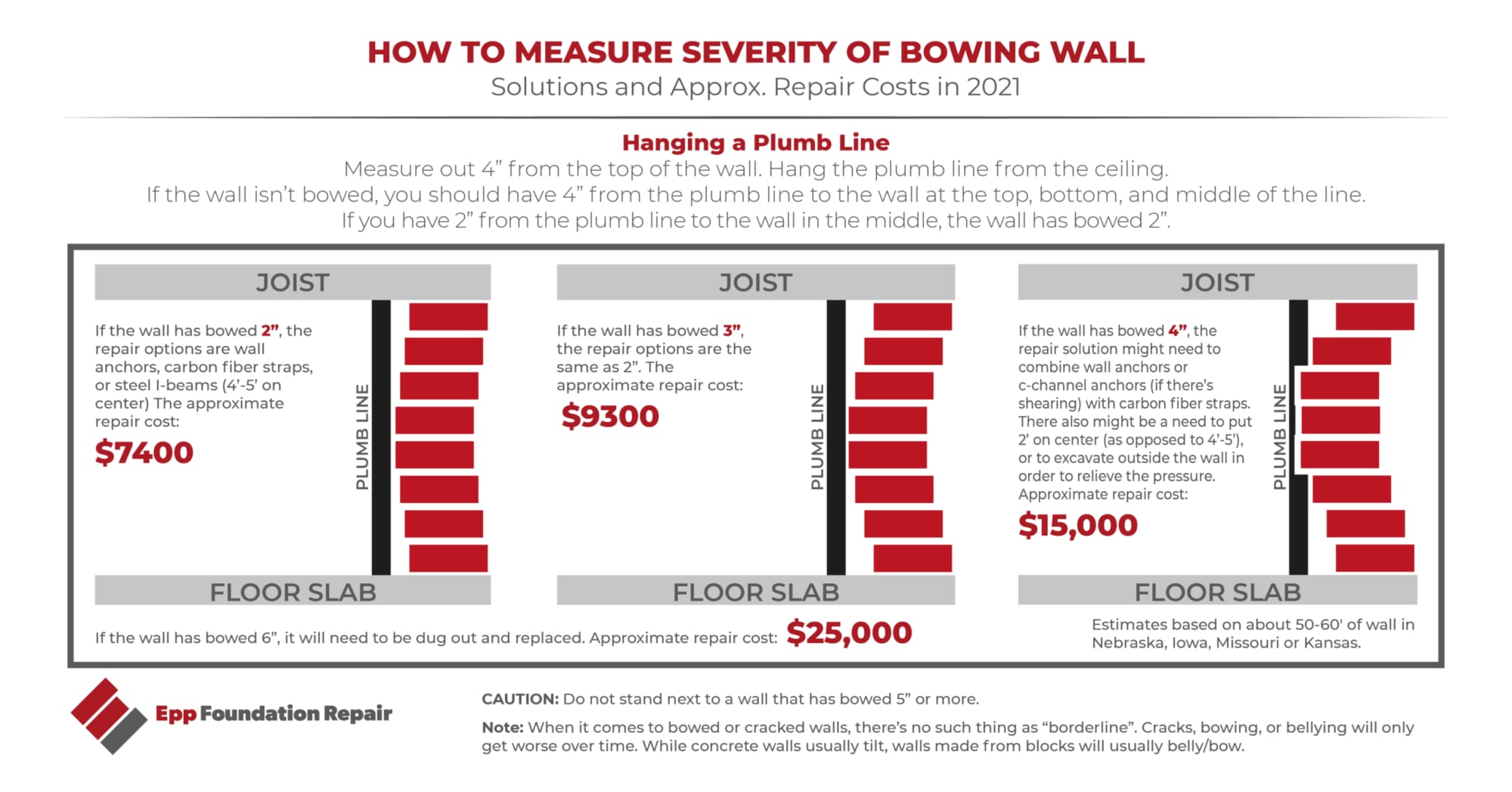
Credit: www.eppconcrete.com
Types Of Cracks And Their Implications
When we talk about Types of Cracks and Their Implications, it’s important to understand that not all cracks are equal. Cracks vary in size, depth, and danger level. Properly identifying the type of crack can save time and money.
Hairline Cracks: Causes And Concerns
Hairline cracks often appear on exterior surfaces. These are thin but might grow if ignored. Causes include:
- Thermal expansion
- Settling of the building
- Incorrectly mixed concrete
If they widen, sealing becomes urgent. Use a flexible caulk designed for outdoor use.
Deep Cracks: Structural Implications
Deep cracks can mean serious problems. They signal potential structural issues. Important signs to look for:
- Cracks wider than 1/4 inch
- Cracks that run at an angle
- Presence of moisture or leaks
These cracks need a professional evaluation. Sealants such as epoxy might be used after expert advice.
Widening Cracks: Monitoring And Actions
Widening cracks call for immediate attention. These could compromise the house’s integrity. Steps to take:
- Monitor the cracks for changes
- Consult a structural engineer
- Use a high-quality sealant or consider repairs
Sealants like polyurethane foam can fill these gaps. Do not delay repairs to prevent further damage.
Preparing For The Sealing Process
Before fixing those pesky exterior cracks, a good preparation is key. It ensures a strong seal that lasts through seasons. Let’s dive into what you need and how to get those cracks ready for sealing.
Essential Tools And Materials For Crack Sealing
To seal gaps properly, gather these must-have items:
- Caulk gun – Applies sealant smoothly.
- Exterior caulk or sealant – Choose weather-resistant types.
- Putty knife – Helps with flat application.
- Wire brush – Cleans out debris.
- Sandpaper – Smoothens rough edges.
- Gloves and goggles – Protects your hands and eyes.
Step-by-step Guide To Cleaning And Prepping Cracks
- Inspect cracks for size and depth.
- Use wire brush to remove loose particles.
- Sand edges for a smooth surface.
- Wipe the area with a damp cloth to clean dust.
- Allow time to dry fully before applying sealant.
Safety Considerations When Working On Exterior Cracks
Stay safe while sealing cracks:
- Wear gloves to protect your skin.
- Keep goggles on to shield your eyes from debris.
- Work in well-ventilated spaces to avoid fume buildup.
- Avoid working in extreme weather for comfort and safety.
How to Seal Cracks Outside House for Different Exterior Surfaces
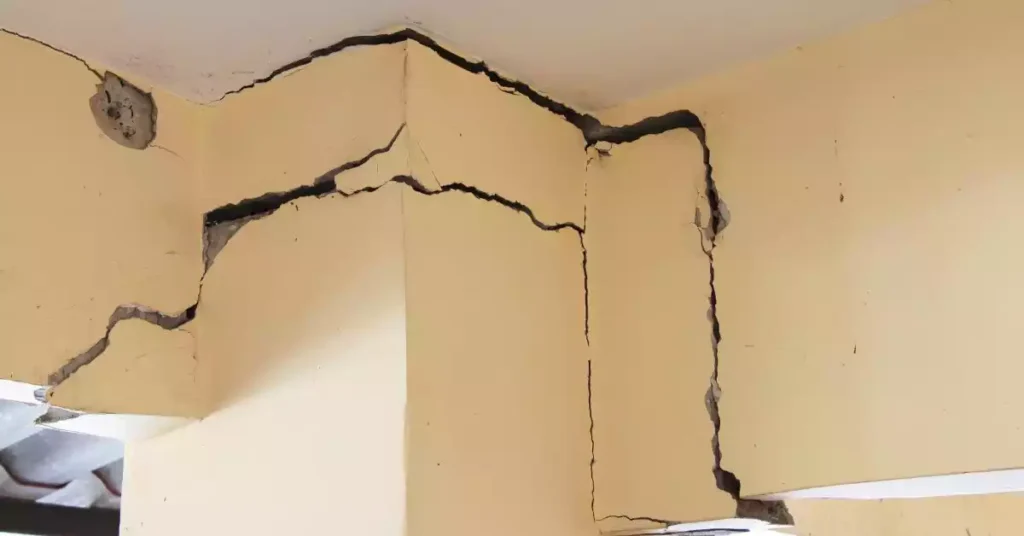
Cracks on your home’s exterior are more than just unsightly; they can lead to costly water damage and energy loss. Finding the right sealing solution depends on the type of surface you are dealing with. Let’s explore effective sealants and techniques for masonry, concrete, wood siding, and stucco surfaces.
Masonry And Concrete: Sealants And Techniques
Masonry and concrete need special attention due to their porous nature. Use a high-quality masonry sealant that can penetrate deep and offer lasting protection.
- Silicone-based sealants work well for small cracks.
- Polyurethane caulks are ideal for larger gaps.
Clean the area thoroughly first. Apply the sealant with a caulk gun for a smooth finish.
Wood Siding: Products And Application Methods
Wood siding requires a flexible sealant to cope with contraction and expansion. Acrylic latex caulks are popular choices, as they are paintable and water-resistant.
- Clean the crack to remove debris.
- Fill the crack using a caulk gun.
- Smooth it out and wipe away excess.
Remember to check the caulk’s compatibility with your paint.
Stucco And Render: Best Practices For Sealing
Sealing stucco and render can be tricky due to their textured finish. Elastomeric sealants are best as they stretch with the material.
- Prep the surface by cleaning and removing loose stucco.
- Apply the sealant with a caulk gun or spatula.
- Use a wet finger or tool to smooth the sealant into the texture.
Choose a sealant that matches the color of your stucco to maintain aesthetics.
Professional Tips For Seal Cracks Outside of House
Everyone wants a firm and secure home. Over time, houses often develop cracks outside. Understanding how to effectively seal these cracks is crucial. It prevents further damage and maintains the home’s integrity. Let’s dive into professional tips that ensure successful crack sealing.
Applying Sealant In Various Weather Conditions
Weather plays a significant role in applying sealant. For best results, check the forecast. Dry and moderate temperatures are ideal. Sealant adheres well and cures properly in such conditions.
- Avoid rainy days – moisture prevents proper adhesion.
- Too hot or cold can affect curing time and bond.
Techniques For A Smooth And Durable Finish
Applying sealant is more than filling cracks. It’s about precision and technique. Use these pointers:
- Clean the cracks well before applying sealant.
- Choose a high-grade, flexible sealant for lasting results.
- Apply evenly and smooth out with a tool for a professional look.
Maintaining Sealant Post-application
After sealing cracks, proper maintenance ensures longevity. Keep an eye on sealed areas:
- Check routinely for signs of wear or damage.
- Clean the sealed surfaces to prevent dirt buildup.
- Reapply sealant when necessary to maintain protection.
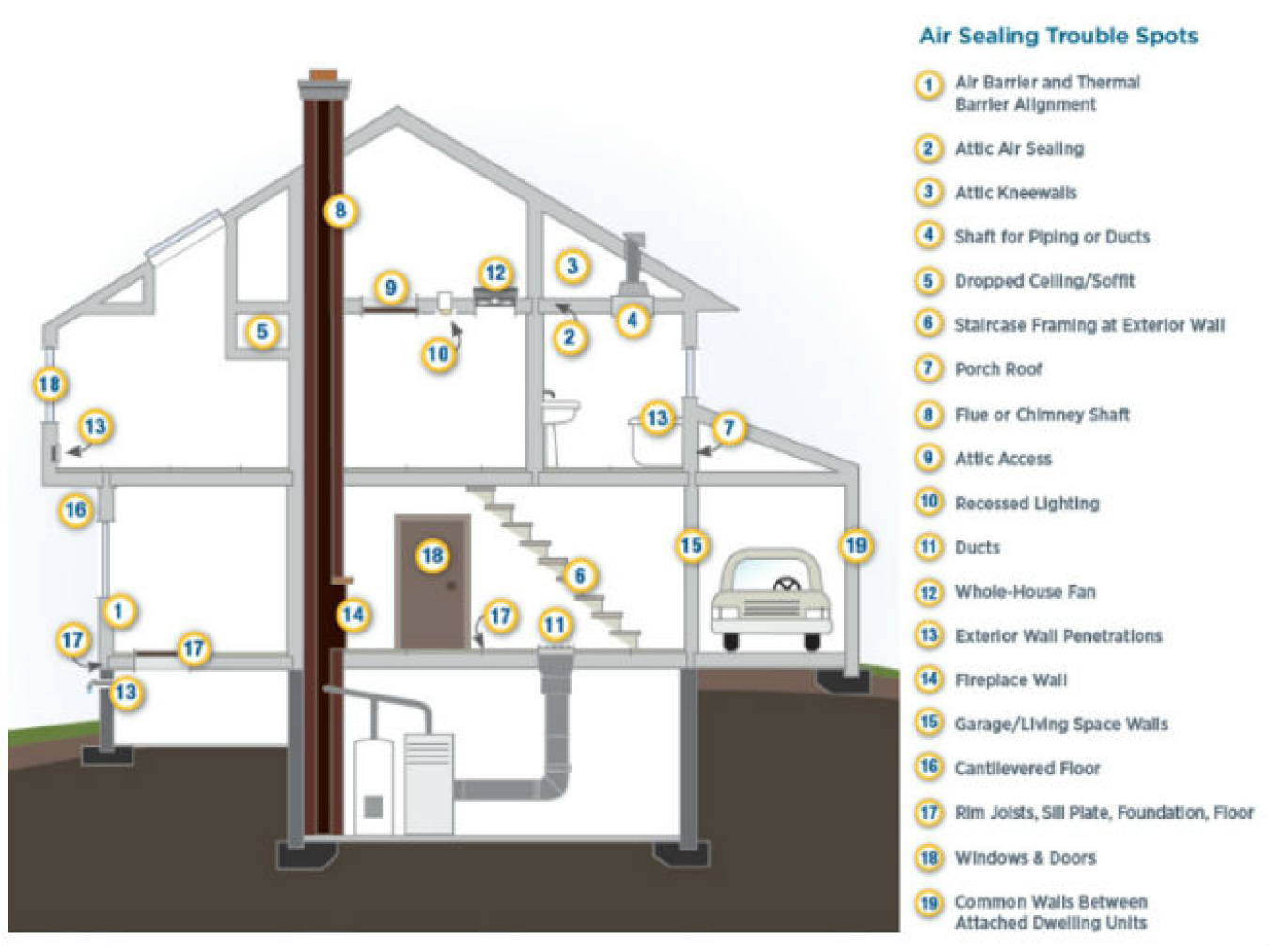
Credit: www.energy.gov
When To Call The Professionals: Evaluating Your Situation
Cracks on the outside of your house can be more than an eyesore; they could signal serious issues. Knowing when to tackle them yourself or call in professionals can save you time and money. The decision often depends on the size, severity, and location of the cracks, as well as your personal skill level and experience with such repairs.
Deciding Between Diy And Professional Repair
Choosing to DIY or hire a pro can be tough. Small, superficial cracks might only need a simple sealant applied. These cracks are commonly fixed by homeowners. However, larger cracks, especially those that grow quickly or return after repair, can require professional assessment.
Signs That Professional Intervention Is Needed
- Wide gaps: Cracks wider than 1/4 inch can be a sign of a serious problem.
- Lengthy cracks: Long cracks that extend across a wall may weaken structural integrity.
- Water leakage: If water seeps through cracks, underlying issues might be present.
- Location: Cracks at specific locations, like where walls meet the foundation, can be troublesome.
Cost-benefit Analysis: DIY Versus Hiring A Pro
Conducting a cost-benefit analysis helps determine the best action. Consider the cost of materials and tools for DIY repairs alongside your own time and effort. Professional services include these costs, plus labor. However, pros bring expertise that may prevent future issues, potentially saving money in the long run.
| Aspect | DIY Repair | Professional Repair |
| Materials | Lower cost | Included in service |
| Tools | May require purchase | Not needed |
| Time | Your own | Included in labor cost |
| Expertise | Limited to your knowledge | Specialized skills |
| Longevity | Varies | Often guaranteed |
Long-term Care And Prevention
Sealing cracks is more than just a quick fix. It’s about keeping your home safe and intact over time. A solid plan for long-term care prevents future damage. It saves time and money too. Let’s explore ways to keep your home in top shape.
Routine Maintenance To Avoid Future Cracks
Regular check-ups keep homes healthy. Spot small problems early. This stops them from growing. Here’s how:
- Inspect your home’s exterior twice a year.
- Clean gutters to prevent water damage.
- Trim trees and bushes away from your house walls.
The Role Of Quality Sealants In Longevity
Choose the right sealant for a lasting fix. Here’s what good sealants do:
- They stick well to different surfaces.
- They flex with your house as it moves.
- They resist water and weather changes.
Future-proofing Your Home Against Weather Damage
Weather hits hard. Be ready. Future-proof your home like this:
- Use weather-resistant materials for repairs.
- Install proper insulation to fight temperature swings.
- Apply weatherproof paint for an extra shield.
Frequently Asked Questions
How Do You Seal Cracks In The Outside Of A House?
Identify the crack and clean out any debris. Apply a suitable exterior caulk or sealant into the crack. Smooth the sealant with a spatula or tool. Allow it to dry according to the product’s instructions. Regular maintenance checks can prevent future cracks.
What Can I Use For Exterior Cracks?
Use exterior-grade caulking, silicone sealant, or masonry crack filler for exterior cracks. These products withstand weather changes and provide a durable repair.
What Is The Best Exterior Waterproof Sealant?
The best exterior waterproof sealant is often a silicone-based product, due to its durability and flexibility. Brands like GE Silicone 2+ and Gorilla Clear Silicone Sealant are top-rated for outdoor use.
What Is The Best Caulk For Exterior Foundation Cracks?
The best caulk for exterior foundation cracks is a flexible, waterproof, silicone-based or polyurethane sealant designed for outdoor use. These materials withstand weather fluctuations and prevent water intrusion.
What Materials Effectively Seal Exterior Cracks?
Several options are available including silicone caulk, acrylic latex caulk, polyurethane foam, and epoxy sealants for effectively sealing exterior cracks.
Conclusion
Sealing house cracks is vital for maintaining a sound structure. Choose the right sealant to protect against weather and pests. For best results, always prepare surfaces properly before applying any product. Remember, a small effort now can prevent major repairs later.
Stay proactive in your home maintenance tasks.

I am Robert Sandin, a professional sealing expert with a diverse range of expertise. From concrete to various other materials, I possess in-depth knowledge and experience in the art of sealing. On my website, I offer valuable tips and expert recommendations on sealing techniques and products for different materials. Whether it’s concrete, wood, metal, or more, I am committed to providing you with the guidance you need for successful sealing projects.

